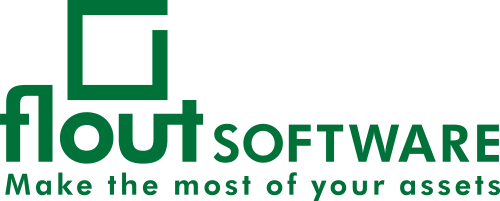

Mining companies in Australia are collecting more geological data than ever. Advances in sensors, remote surveying, digital logging, and modelling have opened up new possibilities, especially for critical minerals, rare earths, lithium, and more. But more data doesn’t automatically translate to better outcomes. In many cases, raw information becomes a burden rather than a benefit if not managed properly.
This post looks at the most pressing geological database challenges that mining firms in Australia are facing today and how to overcome them, with tools and practices that work now. We also show how 1point by Flout Software can help solve these challenges.
Key Challenges & Australian Insights
Before we dive into solutions, here are some current facts and trends in Australia that highlight why geological data management is becoming more urgent:
- Exploration Spending Patterns: In the June quarter of 2025, mineral exploration expenditure in Australia rose by ~2.3% compared to the prior quarter, though it remains slightly down year-on-year. Petroleum exploration fell by about 4.9%. Australian Bureau of Statistics
- Commodity & Regional Focus: In 2024, Western Australia accounted for ~64% of the national exploration spend, followed by Queensland (~14%), New South Wales (~7%), and South Australia (~7%). Commodities with high exploration outlays included gold (~AUD 1,187 million), other critical minerals (~AUD 667.5 million), iron ore (~AUD 769 million), copper (~AUD 575 million), etc. Geoscience Australia
- Increased Expectations & Risks: The 2024-25 KPMG Australian Mining Risk Forecast ranks regulatory complexity, environment-/ESG-related demands, and community/social licence among the top risks for mining companies. KPMG Assets
- Public Sentiment & Social Licence: According to a 2024 CSIRO survey, 73% of Australians believe access to critical minerals is essential for achieving net zero emissions, yet 61% also agree mining has negative environmental impacts. Maintaining trust is therefore more important than ever. CSIRO
These trends show three things: more data is being generated, regulatory and community expectations continue to rise, and firms that can’t manage their geological data properly are at risk of falling behind, either through inefficiencies, non-compliance, or lost opportunities.
Overcoming Geological Data Management Challenges
Here are strategies mining companies in Australia can employ to turn data challenges into advantages. I also include how a geological database / geological data management system, such as 1point can help.
1. Invest in a Modern Geological Database System
Many companies still use spreadsheets, email attachments, or disconnected systems that require manual stitching together. That’s slow, error-prone, and doesn’t scale.
What a good geological database should provide:
- Validation tools to catch errors when data is entered (e.g. sampling, collar, logging, assay data)
- Version control and audit trails to track who changed what, when (important for regulatory reporting)
- Secure storage, ideally cloud-based, with backups and encryption (data sovereignty matters)
- Support for multiple commodities and data types (drillhole, point clouds, remote sensing, etc.)
2. Standardise Data Collection & Adhere to Governance
Having high quality data starts in the field. With increasing exploration in remote areas of WA, QLD, NT etc., inconsistent field practices and manual transcription generate errors.
Best practices include:
- Clear, standardised data dictionaries and data models
- Training field geologists and contractors in consistent logging, sampling, metadata capture
- Use of mobile / live-logging tools (direct input), reducing duplication and transcription errors
3. Enable Collaboration Across Teams & Locations
Mining companies often have dispersed operations. Data silos are common: each site or region keeps its own structures, with limited visibility elsewhere.
To fix this:
- Centralised systems allowing real-time data sharing
- Access control so field users, office geologists, managers, regulators can all see what they need without compromising security
- Data dashboards for monitoring exploration status, costs, drill progress etc.
4. Budget Properly for Ongoing Data Management
The capital and operating budgets often cover drill programs, equipment, and infrastructure, but not enough for data infrastructure, curation, staff, or training.
You should:
- Allocate budget for data management as part of exploration projects; not as an afterthought
- Hire or train roles like data managers, GIS specialists, geostatisticians
- Include maintenance, backups, data review, versioning, metadata audits in annual budgets
5. Use Tools & Analytics to Add Value
Data without insight is just storage. Tools that clean, visualise, model, and produce analytics transform data into decisions.
- Integrate quality control tools, analytics, dashboards
- Use predictive models, machine learning where applicable (e.g. for targeting, risk mapping)
- Adopt software that exports data cleanly into common modelling tools used in Australia (Vulcan, Micromine, Leapfrog, etc.)
How 1point Helps Address These Challenges
Here’s how 1point by Flout Software is designed to help mining companies specifically with their geological database and data management system needs:
- Live Logging & Direct Input: Capture data from the field directly into the system, reducing transcription errors and lag time
- Secure Cloud Infrastructure: Encryption and backups managed in Australian Azure environments, ensuring compliance with data sovereignty and security best practices
- Comprehensive, Centralised Data Storage: Supports multiple commodities and data types; version control and audit trails give confidence during audits and reporting
- User Friendly & Intuitive Interface: Designed so geologists, field staff, and managers can use it with minimal training; saving valuable time
- Compatibility with Modelling & Analytics Tools: One-click exports into tools like Vulcan, Micromine, Datamine, Leapfrog, Minescape and standard formats (CSV, LAS)
Bringing It All Together: Practical Steps for Mining Companies (2025 Action Plan)
Here’s a suggested plan you can adopt this year (2025) to make your geological data management more effective:
| Step | Action | Outcome |
| Audit Current Systems | Review how data flows from field → database → reporting; identify gaps in governance, duplication, errors | You know what’s working, what’s breaking |
| Define Standards | Create or refine data dictionaries, sampling/logging protocols, metadata standards | Reduced errors; higher quality data |
| Select or Deploy Geological Data Management System | Evaluate tools like 1point; setup live-logging; centralised storage; user access controls | Faster, safer, more reliable workflows |
| Leverage Analytics & Reporting | Use dashboards, QC tools, predictive analytics; ensure compatibility with modelling tools | Better insights; more efficient decision-making |
Final Word
Australia’s mining sector is under increasing pressure, not just to discover more, but to manage what it already holds. Geological data management is no longer a back-office task, it’s central to regulatory compliance, community trust, productivity, and maintaining competitive advantage.
1point by Flout Software provides the geological database and data management system that mining companies need in 2025. With live logging, cloud security, intuitive design, commodity-agnostic support, and seamless exports to major modelling tools, it turns data chaos into controlled insight.
Ready to bring clarity, control, and confidence to your geological data?

